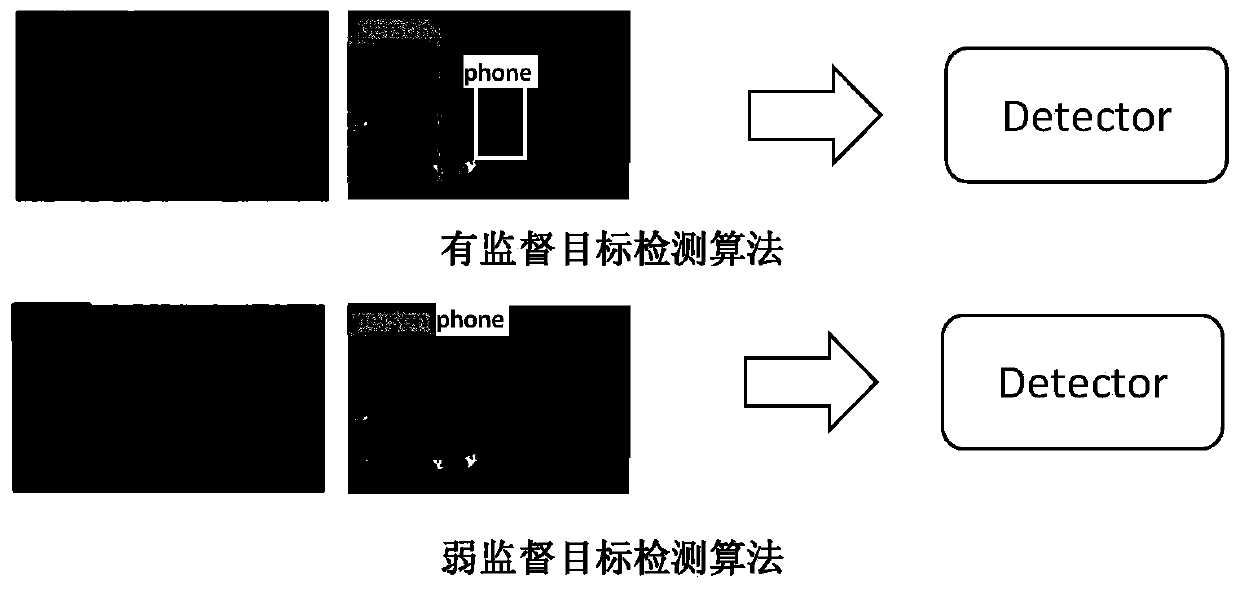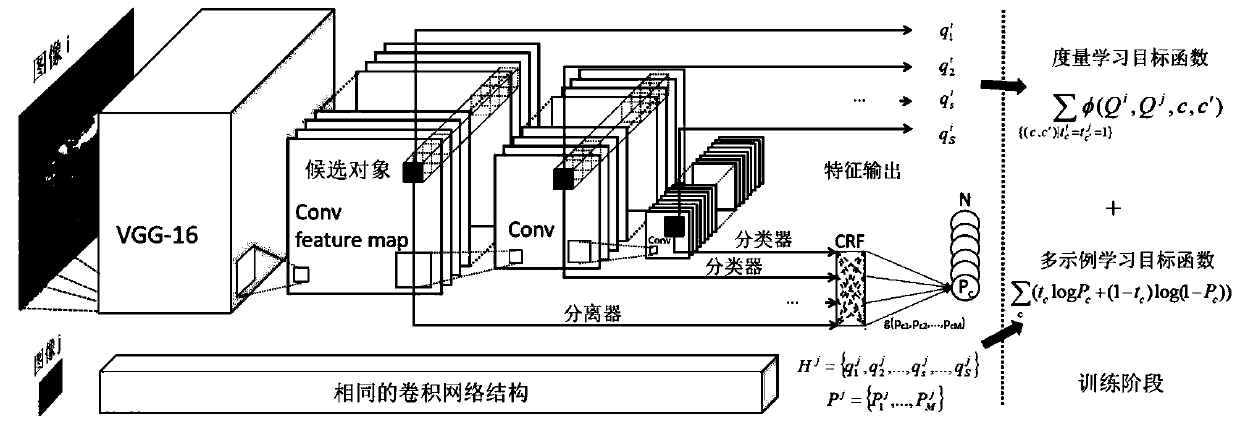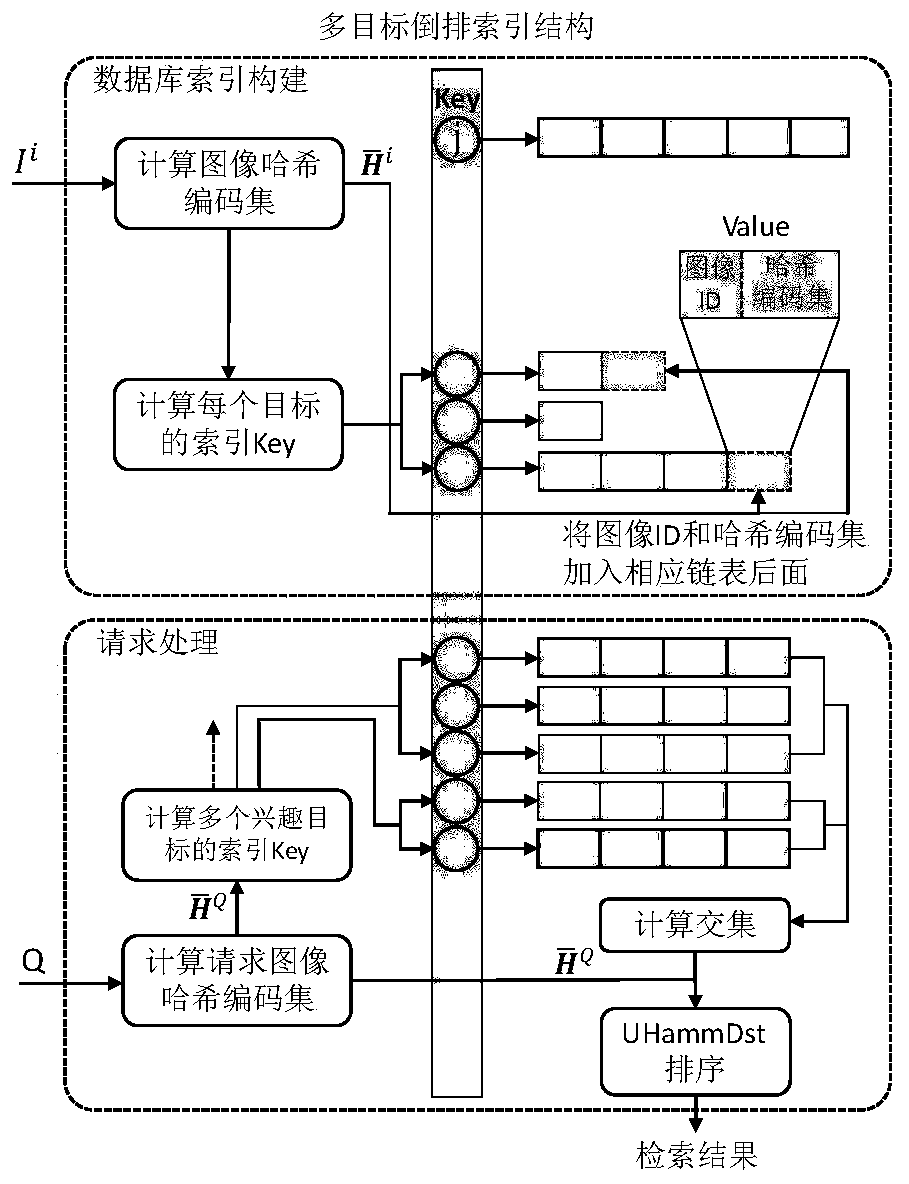Multi-target image retrieval method
An image retrieval, multi-target technology, applied in the field of multi-target image retrieval, can solve the problem of inability to detect the content of bricks, and achieve the effect of speeding up the retrieval speed
- Summary
- Abstract
- Description
- Claims
- Application Information
AI Technical Summary
Problems solved by technology
Method used
Image
Examples
Embodiment 1
[0032] The present embodiment provides a kind of multi-target image retrieval method, comprises the following steps:
[0033] Step 1, input I images, take any image in I images as image i, i=1,2...,I; extract M candidate targets in image i;
[0034] The constructed deep network model is: on the basis of the typical VGG-16, multiple convolutional layers of different scales (respectively 19×19×1024, 10×10×512, 5×5×256, 3×3× 256, 1×1×256), each convolutional layer extracts candidate targets through a 3×3 sliding window, where the stride is 1 and padding is 0;
[0035] In this way, the extracted candidate objects are generated on the feature map instead of the original image. They are much smaller in size than extracted from the original image. This helps to increase efficiency and keep the model compact.
[0036] The method for acquiring candidate targets in the present invention is "W.Liu, D.Anguelov, D.Erhan, C. Szegedy, S.Reed, C.-Y.Fu, and A.C.Berg, "Ssd: Single shot multi...
PUM
 Login to View More
Login to View More Abstract
Description
Claims
Application Information
 Login to View More
Login to View More - R&D
- Intellectual Property
- Life Sciences
- Materials
- Tech Scout
- Unparalleled Data Quality
- Higher Quality Content
- 60% Fewer Hallucinations
Browse by: Latest US Patents, China's latest patents, Technical Efficacy Thesaurus, Application Domain, Technology Topic, Popular Technical Reports.
© 2025 PatSnap. All rights reserved.Legal|Privacy policy|Modern Slavery Act Transparency Statement|Sitemap|About US| Contact US: help@patsnap.com



